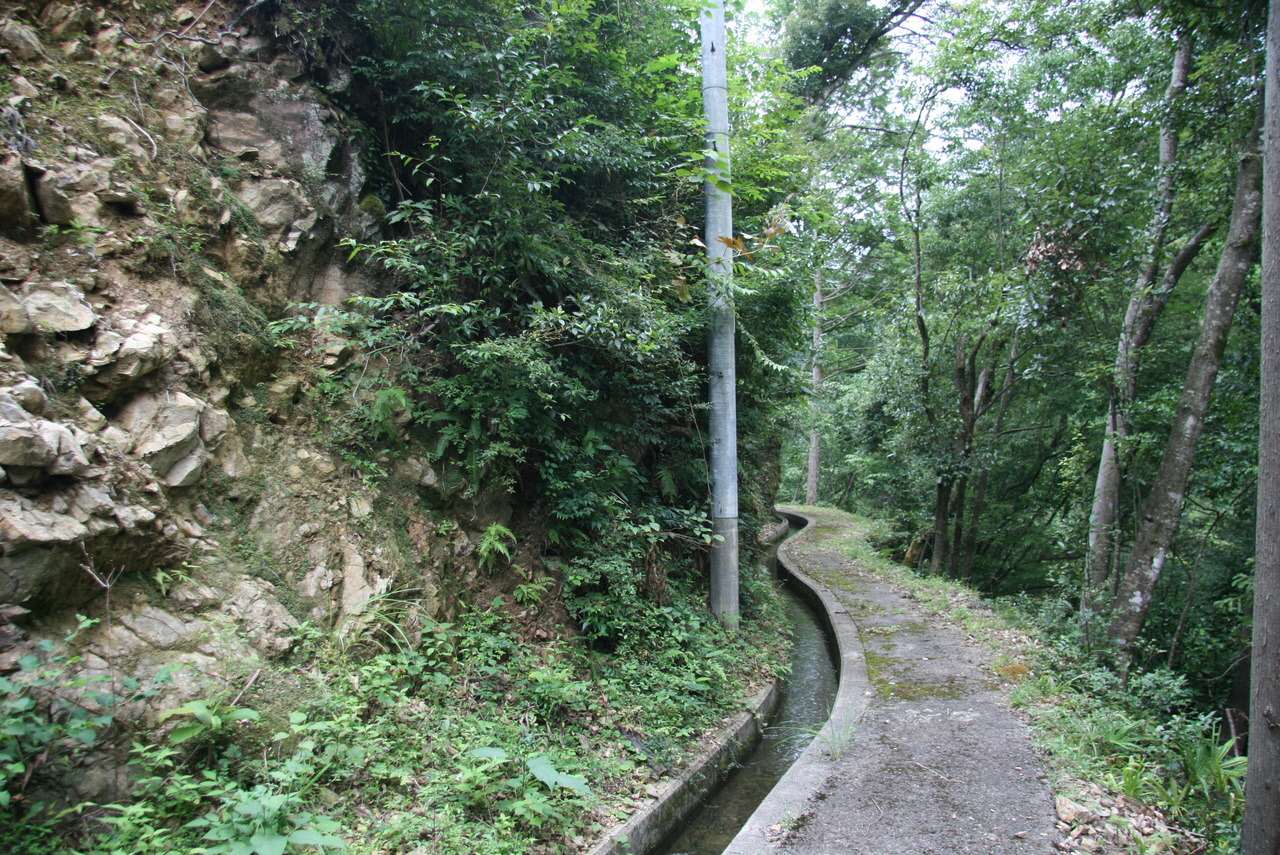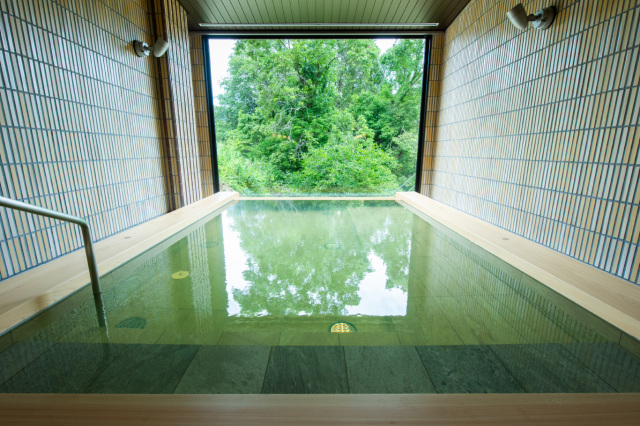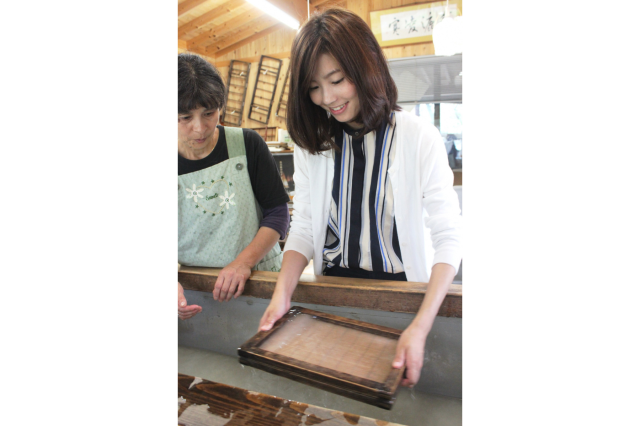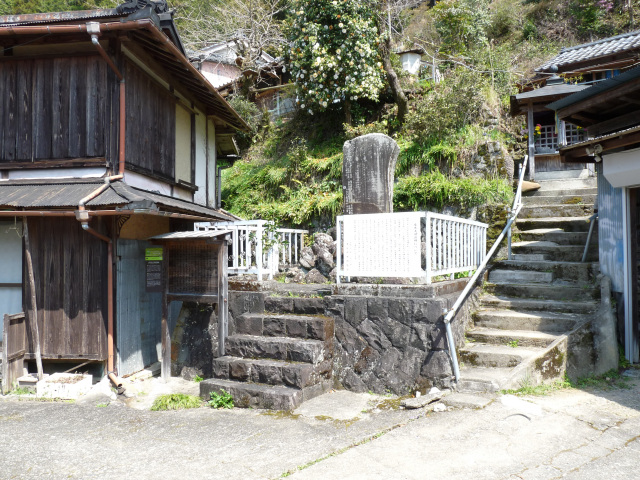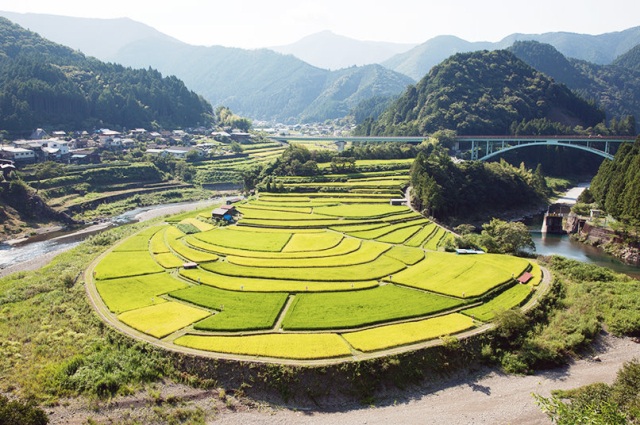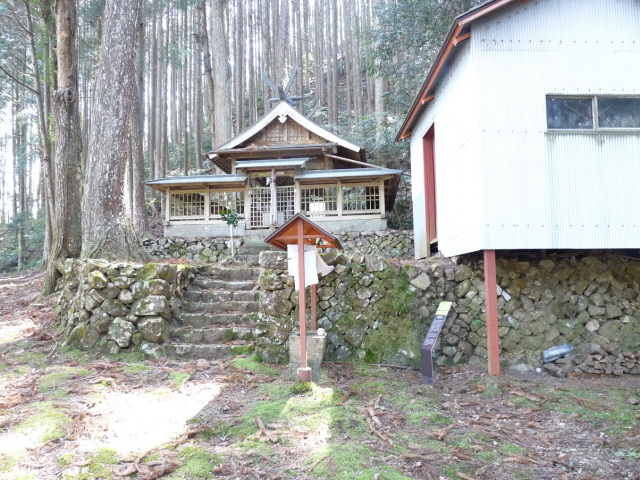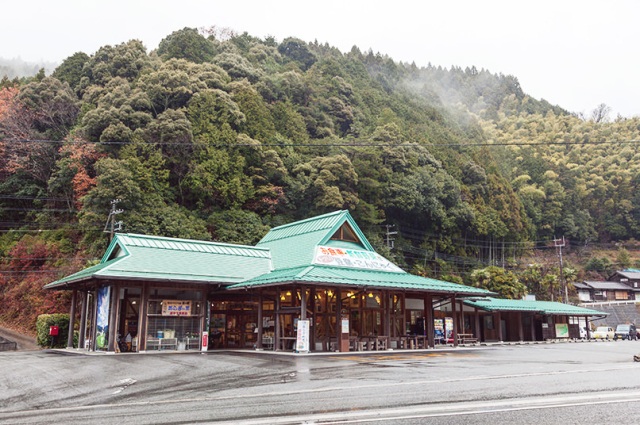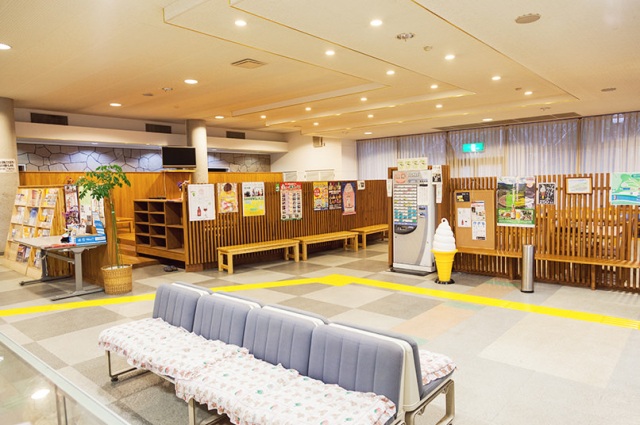Uwayu Irrigation Canal
The Uwayu Irrigation Canal was built in the mid-1600s to supply water to what is now the town of Aridagawa. The 3.2-kilometer-long canal enabled the development of new rice paddies, such as the Aragijima Rice Terraces, as well as the region’s paper industry.
The project was funded by the village headman Kasamatsu Satayū (1598–1673), who sought to alleviate poverty by increasing local rice yields. Cutting through the mountainous terrain was a considerable undertaking at a time before modern surveying tools and excavation machinery. Surviving records show that the canal was completed in 1655.
The canal was originally an earthwork channel with clay walls that had to be frequently monitored for weak spots and reinforced each spring. Local residents collectively managed this key infrastructure for about 300 years. The clay was replaced with more durable concrete following a devastating flood in 1953.
The Uwayu Irrigation Canal is still in use today and runs along its original course, providing irrigation water for roughly 13.5 hectares of farmland. In recognition of its significant place in Aridagawa’s history and culture, the canal was included as part of the Important Cultural Landscape Aragijima Rice Terraces and Rural Mountain Village Landscape of Mita/Shimizu designation in 2013.
- Category
- History / Tradition /Culture
General Information
- Address
- 和歌山県
* Facility information is subject to change. Please check each official website for the latest information.
